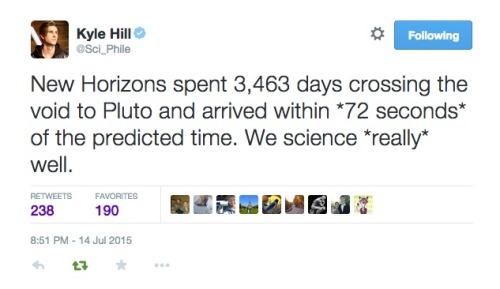Glossary

I’m back! July was nuts! June was also nuts! I’ve missed this podcast, though, and have been thinking about it the entire time because I will never stop loving space. I was working my way through a very meaty book on Edmond Halley and I am here to report on my findings, and also compile some of the things I’ve already said about this cool guy and his cool contributions to science.
Below the cut are my standard glossary, transcript, timeline of people mentioned, sources, and music credits. I take topic suggestions from Tumblr messages, you can tweet at me on Twitter at @HDandtheVoid, or you can ask me to my face if you know me. Subscribe on iTunes to get the new episodes of my increasingly erratically updated podcast, and please please please rate and review it. Go ahead and tell friends if you think they’d like to hear it, too!
(My thoughts on the next episode are Stephen Hawking and his theories or famous comets. The next episode will go up in August—hopefully August 20th!)
Glossary
sidereal year—the time required for the earth to complete an orbit of the sun relative to the stars.
tropical year—the interval at which seasons repeat and the basis for the calendar year.
Script/Transcript
Timeline
Julius Caesar, Roman (100-45 BCE)
Augustus Caesar, Roman (63-14 BCE)
Nicolaus Copernicus, Polish (1473-1543)
Pope Gregory XIII, Italian (1502-1585)
Tycho Brahe, Danish (1546-1601)
Johannes Kepler, German (1571-1630)
Johannes Hevelius, Polish (1611-1687)
Giovanni Cassini (in French, Jean-Dominique Cassini), Italian/French (1625-1712)
Queen Christina, Swedish (1626-1689)
Isaac Newton, English (1643-1727)
John Flamsteed, English (1646-1719)
Elisabeth Hevelius, Polish (1647-1693)
Edmond Halley, English (1656-1742)
John Harrison, English (1693-1776)
Sources
Morse, Stephen P. “The Julian Calendar and why we need to know about it.” The Association of Professional Genealogists Quarterly (March 2014). Accessed July 15, 2018.
Julian Date Converter via the Astronomical Applications Department of the U.S. Naval Observatory.
Hughes, David W. “Edmond Halley, Scientist.” British Astronomical Association (1985). Accessed July 27, 2018.
Cook, Alan. Edmond Halley: Charting the Heavens and the Seas. Clarendon Press: Oxford, 1998.
Intro Music: ‘Better Times Will Come’ by No Luck Club off their album Prosperity
Outro Music: ‘Fields of Russia’ by Mutefish off their album On Draught
More Posts from Fillthevoid-with-space and Others
Binary star systems have come up a lot in the past 18 podcasts, and here is a perfect example of them!




As promised, here is a comic about the brightest star in the northern Hemisphere: Sirius! Sirius B will be shown in future comics as 2018 is year of the dog and since Sirius is the dog star, it is year of the Sirius!
Enjoy!
https://www.space.com/21702-sirius-brightest-star.html

Its pretty incredible how accurate the science of astrophysics has gotten. New Horizons actually arrived 72 seconds early after travelling for almost 10 years straight to its destination.
What's Made in a Thunderstorm and Faster Than Lightning? Gamma Rays!
A flash of lightning. A roll of thunder. These are normal stormy sights and sounds. But sometimes, up above the clouds, stranger things happen. Our Fermi Gamma-ray Space Telescope has spotted bursts of gamma rays - some of the highest-energy forms of light in the universe - coming from thunderstorms. Gamma rays are usually found coming from objects with crazy extreme physics like neutron stars and black holes.
So why is Fermi seeing them come from thunderstorms?

Thunderstorms form when warm, damp air near the ground starts to rise and encounters colder air. As the warm air rises, moisture condenses into water droplets. The upward-moving water droplets bump into downward-moving ice crystals, stripping off electrons and creating a static charge in the cloud.

The top of the storm becomes positively charged, and the bottom becomes negatively charged, like two ends of a battery. Eventually the opposite charges build enough to overcome the insulating properties of the surrounding air - and zap! You get lightning.

Scientists suspect that lightning reconfigures the cloud’s electrical field. In some cases this allows electrons to rush toward the upper part of the storm at nearly the speed of light. That makes thunderstorms the most powerful natural particle accelerators on Earth!

When those electrons run into air molecules, they emit a terrestrial gamma-ray flash, which means that thunderstorms are creating some of the highest energy forms of light in the universe. But that’s not all - thunderstorms can also produce antimatter! Yep, you read that correctly! Sometimes, a gamma ray will run into an atom and produce an electron and a positron, which is an electron’s antimatter opposite!

The Fermi Gamma-ray Space Telescope can spot terrestrial gamma-ray flashes within 500 miles of the location directly below the spacecraft. It does this using an instrument called the Gamma-ray Burst Monitor which is primarily used to watch for spectacular flashes of gamma rays coming from the universe.

There are an estimated 1,800 thunderstorms occurring on Earth at any given moment. Over the 10 years that Fermi has been in space, it has spotted about 5,000 terrestrial gamma-ray flashes. But scientists estimate that there are 1,000 of these flashes every day - we’re just seeing the ones that are within 500 miles of Fermi’s regular orbits, which don’t cover the U.S. or Europe.
The map above shows all the flashes Fermi has seen since 2008. (Notice there’s a blob missing over the lower part of South America. That’s the South Atlantic Anomaly, a portion of the sky where radiation affects spacecraft and causes data glitches.)

Fermi has also spotted terrestrial gamma-ray flashes coming from individual tropical weather systems. The most productive system we’ve seen was Tropical Storm Julio in 2014, which later became a hurricane. It produced four flashes in just 100 minutes!

Learn more about what Fermi’s discovered about gamma rays over the last 10 years and how we’re celebrating its accomplishments.
Make sure to follow us on Tumblr for your regular dose of space: http://nasa.tumblr.com.




“It sounds far fetched even for the plot of a sci-fi film.
NASA scientists have proposed a radical idea to launch a magnetic field around Mars, with hopes it could protect the red planet from intense solar wind and allow humans to explore alongside rovers.
Jim Green, NASA’s Planetary Science Division Director, revealed the idea today at the Planetary Science Vision 2050 Workshop in Washington DC…
The proposal would create a dipole field –a pair of equal and oppositely charged magnets – in an orbit between Mars and the sun, at a point known as Mars L1.
This ‘artificial magnetic field’ would put Mars inside a ‘magnetotail,’ protecting it from the harsh solar wind.
Without the barrage of high-energy particles, Mars’ atmosphere would begin to rebuild itself over time.
In just a matter of years, the simulations show the planet could achieve an ‘Earth comparable field.’
Increasing the pressure would cause the equator to heat up, leading the polar cap to collapse, Green says…"
Source: http://www.dailymail.co.uk/sciencetech/article-4276210/NASA-unveils-plan-surround-Mars-magnetic-field.html?ITO=applenews










Black Holes Are Real And Spectacular, And So Are Their Event Horizons
“Originally estimated to be slightly larger than its M87 counterpart, the black hole at the center of the Milky Way — known as Sagittarius A* — has not yet had its event horizon imaged. When you observe the Universe, you don’t always get what you expect; sometimes, you get what it gives you. Instead, it was M87’s black hole that came through first, which was a much brighter and a much cleaner signal.
What we’ve found is spectacular. Those dark pixels at the center of the image are actually the silhouette of the event horizon itself. The light that we observe comes from the accelerated, heated matter around it, which must emit electromagnetic radiation. Where the matter exists, it emits radio waves, and the dark circle we see is where the background radio waves are blocked by the event horizon itself.”
We have an event horizon, folks! It wasn’t the one at the center of our galaxy that came through first, but rather the one at the center of Messier 87: a black hole over 1,000 times more massive, but some 2,000 times farther away, than the one contained in the Milky Way. This is an ultramassive black hole that’s almost the size of the entire Solar System, and its event horizon is real.
Come get the full story on what we know, now that we have our image, about black holes in the aftermath of the Event Horizon Telescope!
I saw the picture and I thought it was a photo of the space between a Venetian blind and a window frame but no. No. It was a moon between the rings of Saturn.

30 Doradus, located in the heart of the Tarantula nebula, is the brightest star-forming region in our galactic neighborhood. The nebula resides 170,000 light-years away in the Large Magellanic Cloud. Links to very large images in comments.
js

Yes, sure its fun to see a lady spin around like that, but I had one of my friends ask me - “Where do you even use this mate?”
Here’s one application that I know very well off.
Spin Stabilization
If you have ever seen a rocket launch, you might know that sometimes the rockets are given a spin while launching. This is known as spin stabilization.

Basically, the rotational inertia of the rotating body will stabilize the rocket against any disturbances and help maintain its intended heading.
The same principle is used in rifling of firearms as well. **

YoYo DeSpin
Okay, now there is the question how to “De-spin” the rocket:
Well, you do what the lady does: stretch out your arms and you will slow down !

The rocket has weights connected to a cable that stretch out and almost immediately the rocket slows down. This maneuver is known as the YoYo DeSpin. ( Damn good name ! )
All thanks to the conservation of angular momentum !
Have a good one !
* Another method to stabilization : 3-axis stabilization
** Bullets spin stabilization - post
** Source rocket launch video
My microphone just arrived! Now to set it up and figure out how the hell it works....
-
 fillthevoid-with-space reblogged this · 6 years ago
fillthevoid-with-space reblogged this · 6 years ago
A podcast project to fill the space in my heart and my time that used to be filled with academic research. In 2018, that space gets filled with... MORE SPACE! Cheerfully researched, painstakingly edited, informal as hell, definitely worth everyone's time.
243 posts